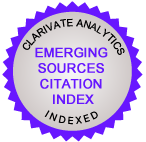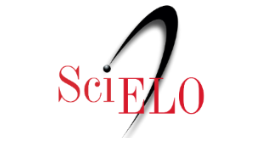Specialized information about cancer in the web editions of the mainstream press in Spain: El País (elpaís.com) and El Mundo (elmundo.es)
-
Rosalba Mancinas Chávez
 rmancinas@us.es
rmancinas@us.es
-
Julia Guerrero Alcántara
 julguealc@alum.us.es
julguealc@alum.us.es
Downloads
DOI:
https://doi.org/10.56754/0718-4867.2023.3365Abstract
Cancer is a disease that in 2022 had an estimated incidence in Spain of 282,421 cases (IARC). Based on other similar studies, this study analyses the publications on the four types of cancer with the highest incidence (breast cancer, lung cancer, prostate cancer, and colorectal cancer) in the digital versions of the leading Spanish newspapers El País (elpais.com) and El Mundo (elmundo.es) during the period from 1 January to 31 December 2022. The aim is to determine the treatment and level of specialization in the generalist press, considering the following variables: byline, journalistic genre, subject matter, reference to relevant figures, section, sources, and linguistic resources. From these variables, based on a previous exploration, a series of categories were established for each one of them. The data search was performed using the My News tool; the content analysis was done manually. The results show that the texts signed by specialized journalists represent a very small percentage; the most used journalistic genre is the article, and almost half of the texts analyzed appear in the Science or Health sections, the rest being spread over several sections. The theoretical review and the content analysis coincide in the need for specialized press coverage of a topic as relevant to public health as cancer.
Palabras Clave
Abadal, E. & Guallar, J. (2010). Prensa digital y bibliotecas. Ediciones Trea. https://bit.ly/3PnImEX
Amberg, A. & Saunders, D. N. (2020). Cancer in the news: Bias and quality in media reporting of cancer research. PLoS ONE, 15(11), 1-13. https://doi.org/10.1371/journal.pone.0242133
Barrera-Páez, L. (2016). El periodismo especializado en salud: una reseña histórica = Health journalism: a historical overview. Revista Española de Comunicación en Salud, 1, 15-22. http://dx.doi.org/10.20318/recs.2016.3118
Borzekowski, D. L., Guan, Y., Smith, K. C., Erby, L. H., & Roter, D. L. (2014). The Angelina effect: immediate reach, grasp, and impact of going public. Genetics in medicine: official journal of the American College of Medical Genetics, 16(7), 516–521. https://doi.org/10.1038/gim.2013.181
Brea-Carrasco, M. (2006). El cáncer en los medios de comunicación. En Carrillo, K., Primer Libro Blanco de la Oncología Médica en España (385-396). SEOM. https://bit.ly/3LrA1iB
Brown, M. L., & Potosky, A. L. (1990). The presidential effect: the public health response to media coverage about Ronald Reagan's colon cancer episode. Public opinion quarterly. 54(3), 317–329. https://doi.org/10.1086/269209
Carrasco-García, M. A., Neira-Mellado, C. P., Cárcamo-Ulloa, L. (2021). Representación de la Incidencia y Mortalidad del Cáncer en los Medios de Comunicación Chilena. Revista Médica de Chile, 149(5), 716-723. http://dx.doi.org/10.4067/s0034-98872021000500716
Cassany, R., Cortiñas, S., & Elduque, A. (2018). Communicating science: The profile of science journalists in Spain. Comunicar la ciencia: El perfil del periodista científico en España. Comunicar, 55, 09-18. https://doi.org/10.3916/C55-2018-01
Catalán-Matamoros, D. & Peñafiel-Saiz, C. (2019). Specialty matters. Analysis of health journalists’ coverage about vaccines. Profesional de la información, 28(2), 1-10. https://doi.org/10.3145/epi.2019.mar.01
Chapman, S., McLeod, K., Wakefield, M., & Holding, S. (2005). Impact of news celebrity illness on breast cancer screening: Kylie Minogue's breast cancer diagnosis. The Medical journal of Australia, 183, 247-50. DOI: 10.5694/j.1326-5377.2005.tb07029.x
Cuenca-Octavio, N., & Llorente-Barroso, C. (2023). Onco-influencers en Instagram: caso de estudio de Elena Huelva y L’Oréal. IROCAMM, 6(1), 69-87. https://dx.doi.org/10.12795/IROCAMM.2023.v06.i01.05
Días-de-Moraes, L. (2013). El cáncer de mama en la prensa española. La cobertura informativa del cáncer de mama en ABC, El País, El Mundo, La Vanguardia y El Periódico de Catalunya, de 2006 a 2010 [Tesis doctoral]. Universitàt Autónoma de Barcelona, España. https://shre.ink/nsBr
____ (febrero, 2008). Estudio cuantitativo de las fuentes informativas en las noticias sobre cáncer de mama publicadas en El País. Congreso Internacional Fundacional AE-IC. Santiago de Compostela, España. ISBN 978-84-612-3816-3. https://bit.ly/3LnlggQ
Estudio General de Medios (EGM) (2022). Ranking de diarios. Asociación para la investigación de Medios de Comunicación. https://bit.ly/469tAIW
Fundación Española para la Ciencia y la Tecnología (FECYT) (2018). IX EPSCYT Informe de resultados. Ministerio de Ciencia, Innovación y Universidades. https://bit.ly/3ARlneC
____ (2022). Encuesta de percepción social de la ciencia y la tecnología en España (EPSCT) (edición 1.0). Ministerio de Ciencia, Innovación y Universidades. https://doi.org/10.58121/msx6-zd63
González-Borjas, A. (2004). Salud, información periodística en alza. Ambitos: Revista internacional de comunicación, (11-12), 301-310. https://bit.ly/3PG60Oy
González-Clavero, M. V. (2016). Agencias de noticias, su constante reinvención como estrategia para enfrentar la competencia. Estudios sobre el Mensaje Periodístico. Portal de Revistas Científicas Complutenses, 22(1), 329-341. DOI: 10.5209/REV_ESMP.2016.V22.N1.52599
Gutiérrez, M. F., & Rodríguez-Leuro, J. A. (2015). Científicos y periodistas en la divulgación de la ciencia. Un problema de responsabilidad social. Revista Colombiana de Bioética, 7(2), 35-44. https://bit.ly/3Zq930r
IARC (2020). Estimated age-standardized incidence rates (World) in 2020, all cancers, both sexes, all ages. Cancer Today. https://bit.ly/3PINbKM
Jenkins, C., Ha, D. T., Lan, V. T., Van-Minh, H., Lohfeld, L., Murphy, P., & Ha, L. T. H. (2020). Breast Cancer messaging in Vietnam: an online media content analysis. BMC public health, 20(966), 1-10. https://doi.org/10.1186/s12889-020-09092-8
Marzo-Castillejo, M., Bartolomé-Moreno, C., Bellas-Beceiro, B., Melús-Palazón, E., & Vela-Vallespín, C. (2022). Recomendaciones de Prevención del Cáncer. Actualización PAPPS 2022. Atención primaria: Publicación oficial de la Sociedad Española de Familia y Comunitaria, 54(1), 1-25. DOI: 10.1016/j.aprim.2022.102440
Meneses-Fernández, M. (2007). En torno al Periodismo especializado. Consensos y disensos conceptuales. Anàlisi: Quaderns de comunicació i cultura, 35, 137-152. https://ddd.uab.cat/record/20865
Moreno-Castro, C., & Gil-Pérez, A. (2014). ¿Periodismo diletante o ciencia mediática? La metamorfosis del artículo científico en noticia de prensa. En Barrio-Alonso, C., & Cáceres-Gómez, S. (Eds.), Fronteras de la Ciencia. Dilemas (pp. 47-58). Biblioteca Nueva/OEI.
Moreno-Espinosa, P. (2007). Opinión y géneros en el periodismo electrónico: redacción y escritura. Ámbitos. Revista Internacional de Comunicación, 16, 123-149. https://acortar.link/wgQaBr
Nelkin, D. (1996). An uneasy relationship: the tensions between medicine and the media. The Lancet, 347, 1600-1603. DOI: 10.1016/s0140-6736(96)91081-8
Quintana-Sáinz, A. (2018). A year of cancer coverage in the Spanish written press. Revista española de comunicación en salud, 9(2), 109-115. https://doi.org/10.20318/recs.2018.4488
Revuelta, G., & Minelli-de-Oliveira, J., (2008). La salud y la biomedicina en la prensa diaria. Un análisis de diez años. Periodística, (11). 55-68. DOI: 10.2436/20.3008.02.5
Revuelta, G., De-Semir, V., Armengou, C., & Selgas, G. (2011). Informe Quiral 2011: Cáncer. Fundació Vila Casas y Observatorio de la Comunicación Científica de la Universidad Pompeu Fabra. https://bit.ly/48iCq92
Sánchez-Ballestero, S. (2018). Análisis de contenidos: el cáncer de piel en los principales medios de prensa españoles. Revista Española de Comunicación en Salud, 9(1), 22-31. https://doi.org/10.20318/recs.2018.4249
Sánchez-Holgado, P., Arcila-Calderón, C. & Frías-Vázquez, M. (2021). El papel de los y las periodistas españoles ante la comunicación de la ciencia de datos en medios en línea. Prisma Social, 32, 344-375. https://revistaprismasocial.es/article/view/3901
Sánchez-Sabate, R., Zunino, E., Badilla-Briones, Y., Celedon Celis, N., & Caro-Saldías, D. (2021). Chilean Digital Press Coverage of the Relation between Diet and Mental Health. International Journal of Environmental Research and Public Health, 18(5), 1-18. https://doi.org/10.3390/ijerph18052273
Schäfer, M. S. (2012). Taking stock: A meta-analysis of studies on the media’s coverage of science. Public Understanding of Science, 21(6), 650-663. https://doi.org/10.1177/0963662510387559
SEOM (2023). Las cifras del cáncer en España. https://seom.org/images/Las_cifras_del_Cancer_en_Espana_2023.pdf
Serrano, P. (2014). La Prensa ha muerto ¡viva la prensa! Península.
Serra-Piana, M. (2020). Las metáforas sobre el cáncer en artículos de divulgación: otro desafío para el traductor científico. Nueva ReCIT: Revista Del área De traductología, (3), 57–68. https://revistas.unc.edu.ar/index.php/ReCIT/article/view/28888
Stryker, J. E., Emmons, K. M., & Viswanath, K. (2007). Uncovering differences across the cancer control continuum: A comparison of ethnic and mainstream cancer newspaper stories. Preventive Medicine, 44(1), 20-25. https://doi.org/10.1016/j.ypmed.2006.07.012
Williamson, M. L., Jones, I. H., & Hocken, D. B. (2011). How does the media profile of cancer compare with prevalence? The Annals of The Royal College of Surgeons of England, 93(1), 9-12. https://doi.org/10.1308/003588411X12851639106954
Similar Articles
- Alfredo Arceo Vacas, Rafael Barberá González, Sergio Álvarez Sánchez, The context of perception generated on Twitter for the Spanish electoral debates of December 2015 and June 2016: treatment of the credibility factors by the candidates , Perspectivas de la Comunicación: Vol. 13 No. 2 (2020): July-December
- José Luis Torres-Martín, Andrea Castro-Martínez, Pablo Díaz-Morilla, Cristina Pérez Ordóñez, Women executives and creators in the audiovisual sector. Analysis of Spanish fiction series in the catalogs of Amazon Prime Video, Movistar+, and Netflix (2019-2021) , Perspectivas de la Comunicación: Vol. 15 No. 2 (2022): July - December
- Daniela Bruno, Verónica Becerro, Flavia Demonte, Communication in/of social research: a review of recent Ibero-American scientific literature , Perspectivas de la Comunicación: Vol. 17 (2024): January - December
- Carlos Rusconi, Eugenia Roldán, Local media and political practices: notes for addressing mediatization. , Perspectivas de la Comunicación: Vol. 14 No. 1 (2021): January - June
- Alicia de Lara González, José Alberto García-Avilés, Study about online video quality in science communication , Perspectivas de la Comunicación: Vol. 12 No. 1 (2019): January - June
- Elena Francés Tecles, Ramón Camaño Puig, Internal communication in primary health centers: A nursing perspective , Perspectivas de la Comunicación: Vol. 16 No. 2 (2023): July - December
- Javier Abuín-Penas, Claudia Montero Liberona, How does the Chilean Ministry of Health communicate about cancer? Analysis of Facebook and Instagram posts from 2018 to 2023 , Perspectivas de la Comunicación: Vol. 16 No. 2 (2023): July - December
- Danielle Tavares Teixeira, Guidelines for a scientific communication policy for the University of the State of Mato Grosso (Brazil) , Perspectivas de la Comunicación: Vol. 12 No. 1 (2019): January - June
- Lucía Céspedes, Argentinian magazine Ciencia Nueva (1970-1974): an analysis of its contents, graphic resources, advertising, and readership , Perspectivas de la Comunicación: Vol. 12 No. 1 (2019): January - June
- Francisco Javier Alonso-Flores, Carolina Moreno-Castro, Antonio Eleazar Serrano-López, Researchers‘ age, gender and professional status as indicators of the Twitter perception in science dissemination , Perspectivas de la Comunicación: Vol. 12 No. 1 (2019): January - June
1 2 3 4 5 6 7 8 9 10 11 12 > >>
You may also start an advanced similarity search for this article.
Downloads
Published
How to Cite
Issue
Section
License
Copyright (c) 2023 Rosalba Mancinas Chávez, Julia Guerrero Alcántara

This work is licensed under a Creative Commons Attribution 4.0 International License.
- Proposed policy to offer Open Access Journals
Authors who publish with this journal agree to the following terms:
a) Authors retain copyright and grant the journal right of first publication with the work simultaneously licensed under a Creative Commons Attribution Attribution (CC -BY 4.0) ![]() that allows others to share the work with an acknowledgement of the work's authorship and initial publication in this journal.
that allows others to share the work with an acknowledgement of the work's authorship and initial publication in this journal.
b) Authors are able to adopt licensing agreements for the non-exclusive distribution of the journal's published version of the work (for example, to post it to an institutional repositories or publish it in a monograph), with an acknowledgement of its initial publication in this journal.
c) Authors are allowed and encouraged to post their work online (For example, in institutional repositories or on their website) prior to and during the submission process, as it can lead to productive exchanges and increase the citation of published work (See The Effect of Open Access).











